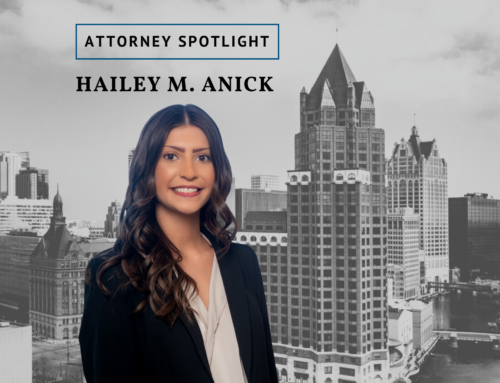Policyholders nationwide are frustrated with the insurance industry in general. The recent murder of one of the nation’s largest healthcare insurers by a disgruntled policyholder is just one glaring example.[1] Or consider the 26.4% premium increase homeowners across the country experienced over the past three years on average.[2] Here in Wisconsin, homeowners saw their premiums jump 21.4% on average since 2018. While policyholder dissatisfaction is certainly expected in the wake of national headlines and skyrocketing premiums, it is important for Wisconsin homeowners to acknowledge the cause and source of their grievances – climate change and fake news.
Climate change has and will continue to have adverse effects on the property and casualty insurance sector. Three and a half years ago, Wisconsin’s Office of the Commissioner of Insurance (OCI) began warning homeowners of the anticipated consequences of climate change when it launched the “Stronger Wisconsin” outreach campaign aimed at educating communities on ways to mitigate property damage resulting from more frequent catastrophic weather events.[3] Then Wisconsin Insurance Commissioner Mark Afable, in a related comment about his efforts at the national level[4], stated:
“Climate change presents a serious risk to the economic stability of property owners, small businesses, and entire communities. The work of this task force helps ensure that those risks are reduced with education, preparation, and mitigation efforts.”
Looking at more recent data, it is fair to say Commissioner Afable correctly predicted Wisconsin homeowners would feel the effects of climate change. Over the past 44 years, there have been 44 severe storm events in Wisconsin, but nearly half of those severe storms occurred just in the past 4 years.[5] In 2022, Wisconsin ranked 6th for highest hail damage costs after seven catastrophic weather events according to one of the nation’s leading property and casualty insurers.[6] Last year, a single company paid $60 million on over 3,500 catastrophic claims in Wisconsin.
Given the insurance industry is shouldering the impacts of climate change on homes in Wisconsin, homeowners’ frustration is fairly misdirected. Part of the problem arises from news organizations promoting the unfounded remarks of overzealous advocates such as “th[ere is a] macro trend in insurance. They’re covering less.”[7] That is simply untrue based on the data. Rather, there are more storms leading to more claims subject to a denial.
But why is your claim being denied if there was a catastrophic hailstorm? Those same legal critics advertise the denial results from “a disconnect between what [the insurer]’s policy says it covers for hail damage and how it trains its staff to identify it.” Reporting like this, however, only adds fuel to the fire while inviting members of the legal community to extort misinformed homeowners and abuse Wisconsin’s court system. Common sense suggests the number of claims with mixed sources of roof damage – wear and tear, mechanical defects, lichen, etc. – have correspondingly increased with the number of hail claims filed. In fact, the Wisconsin OCI report above disclosed:
“[N]early three quarters of consumers say the most significant threats facing their homes today are weather-related. While 50% of homeowners have not made any changes to protect their homes from extreme weather events, 71% of them indicated that they would spend their own money to do so if it would reduce their insurance premiums.”
Wisconsin homeowners, moreover, are encouraged to rethink the circumstances surrounding the denial of their hail claim. Namely, what is the current condition of your roof? Is your roof 15, 25, or even 35 years old? Would your roof naturally require replacement due to its age? Was your roof properly installed or was installation defective causing nail pops and water moisture? Could lichen have accumulated on your shingles? These are the questions your insurance adjuster, an employee just doing their job, must answer when evaluating each aspect of the damage to your roof. While adjusters can get it wrong, they may also have got it right. They are only human just like you.
All of us in Wisconsin – homeowners, insurance companies, attorneys, and the courts – are feeling the impacts of climate change. Rather than battle one another, let’s battle climate change together.
[1] Magg, Christopher, et al., What We Know About the United Healthcare C.E.O.’s Killing and the Suspect, the new york times, Dec. 4, 2024, updated Dec. 13, 2024,https://www.nytimes.com/2024/12/06/nyregion/unitedhealthcare-brian-thompson-shooting.html
[2] See Bornhoft, William, Home Insurance Rates Spike In WI: What’s Behind Massive Rise?, June 17, 2024, https://patch.com/wisconsin/across-wi/home-insurance-rates-spike-wi-what-s-behind-massive-rise
[3] Press Release, Agency Secretaries Unite to Call Attention to Climate Disaster Mitigation Opportunities, wisconsin office of the commissioner of insurance, June 28, 2021, https://oci.wi.gov/Pages/PressReleases/20210628StrongerWIDoorCountyOutreach.aspx
[4] Press Release, Insurance Commissioner Afable Announces New Leadership Role in National Effort toward Climate Resiliency, wisconsin office of the commissioner of insurance, April 21, 2021, https://oci.wi.gov/Pages/PressReleases/20210421Pre-DisasterMitigationChair.aspx
[5] Wisconsin Summary, national centers for ENVIRONMENTAL information, Nov. 1, 2024, https://www.ncei.noaa.gov/access/billions/state-summary/WI
[6] Sachs, Jenna, State Farm hail damage assessments, Wisconsin homeowners frustrated, fox6 news milwaukee, Feb. 1, 2024, https://www.fox6now.com/news/state-farm-hail-damage-wisconsin
[7] Sachs, Jenna, Wisconsin dispute over hail damage claim headed to court, , fox6 news milwaukee, Aug. 4, 2024, https://www.fox6now.com/news/dispute-hail-damage-claim-jackson






